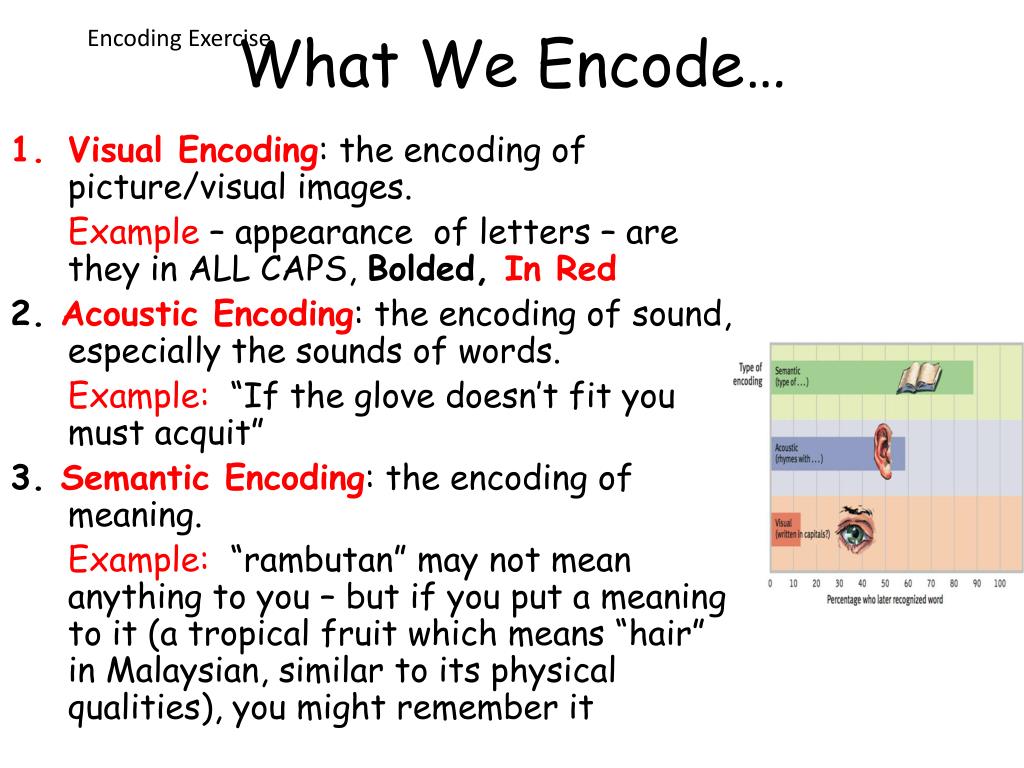

For instance, when you read the word /tea/, you can encode the meaning from it in the context that it appears in, in this case, a phrase or sentence. It can influence the way we remember certain concepts.Īnother meaning can be reading written information. The context of the meaning of information is essential in semantic encoding. When someone says the word /cat/ to you, you immediately know what they are referring to and perhaps understand what they mean in a specific context. One example is information from word meanings. Sensory information can come from any of our senses – touch, hearing, taste, visual, or smell. It is a type of cognitive encoding that provides the experience of understanding the meaning of things we come across daily. Semantic encoding allows us to make sense of the world around us. Regarding semantic encoding, sensory information is converted into meaning which can be applied to a context. Encoding refers to converting input from sensory stimuli into a form that can be processed and remembered. The word encoding also requires some explanation. In this way, the focus is not on the perceptual aspects of the data retrieved from our surroundings. Semantic encoding is when the brain takes information from our senses and encodes this into meaningful information.

Different proposed models explain how concepts are organized in the brain, and we use these structures to encode meaning.

Semantic encoding is one of the best ways in which we remember things and can recall them later. It is one of the first steps in memory encoding. Sensory information in our surroundings is converted into a meaningful form so that you can remember it. Semantic encoding is a cognitive process whereby we encode sensory input from our environment to give it meaning. Semantic encoding is one of the ways in which we associate meaning to the raw data around us, which can then be stored as memory and recalled later. Encoding, converting sensory information to memory, is an essential process humans require for everyday tasks.


 0 kommentar(er)
0 kommentar(er)
